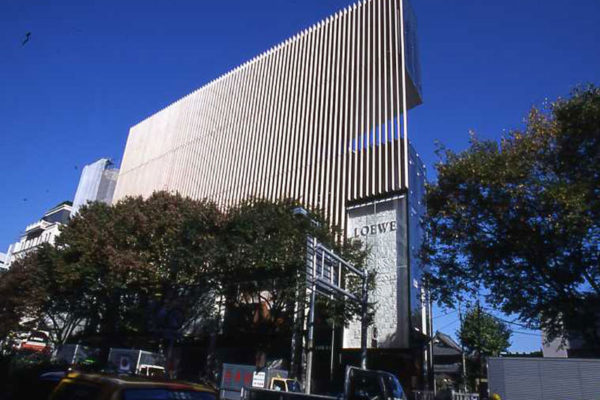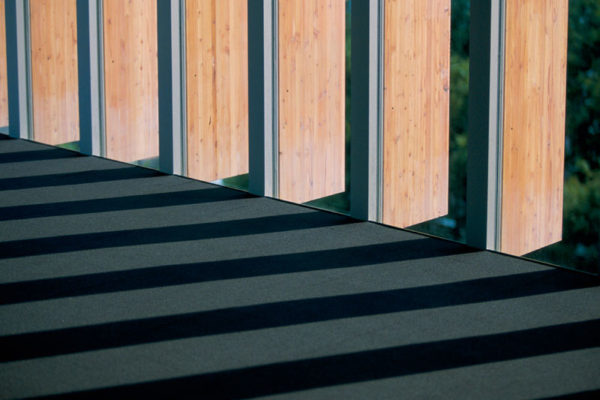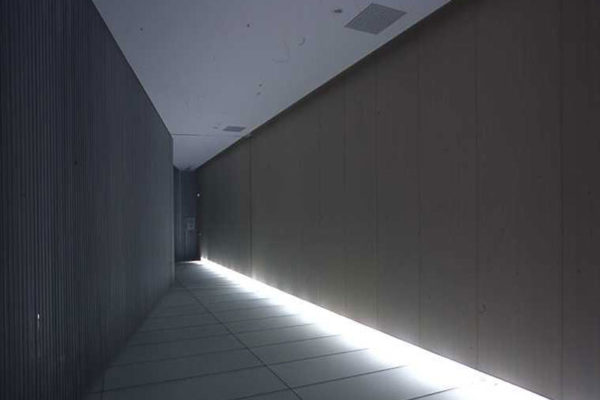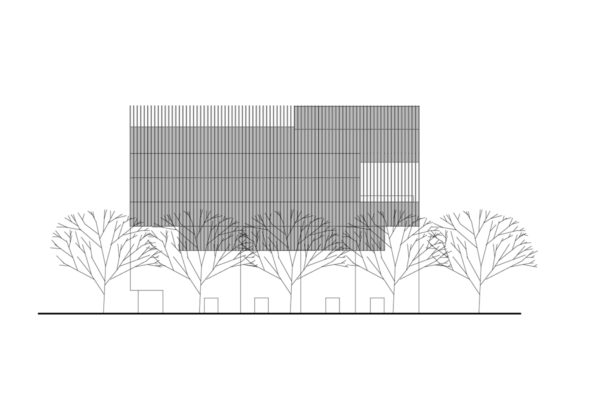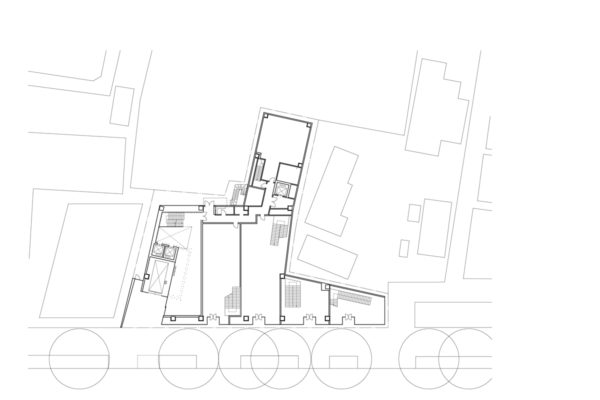Japan 2003One Omotesando
The project is the head office building of a fashion group that stands at the entrance to Omotesando, often called the most beautiful avenue in Tokyo.
Omotesando is a picturesque boulevard lined on both sides with huge zelkova trees that leads to Meiji Shrine, the largest Shinto shrine in Tokyo. My aim was to make these trees resonate and not conflict with the building. We created a mullion; 45 cm deep with laminated wood made of larch supporting the curtain wall. The stems would resonate with the lumber and the vertical lines of mullions would resonate with vertical lines of the trees. The wooden mullion also resonates with Meiji Shrine’s wooden architecture.
The mullion contributes to energy conservation by shielding the interior from direct sunlight and mitigates the greenhouse effect by fixing carbon dioxide production. Although Japan’s Building Standard Law prohibits the use of wood on the exterior walls of buildings in large urban areas we were able to obtain special permission by installing a drencher on the outside wall.
In the past Tokyo was a city of wooden architecture. The human scale of wooden buildings and the warmth and softness of this natural material made Tokyo uniquely appealing. After the Second World War, however, Tokyo was invaded by huge concrete buildings, destroying its charm as a city. My wish is to restore Tokyo’s attractiveness by making use of the power that wood has, and to reconstruct a more “human” city. I hope this project on Omotesando will be a start.

